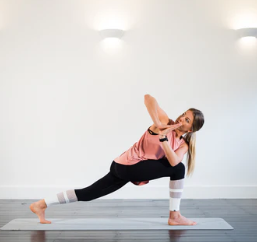Life often feels like a constant balancing act, with responsibilities, deadlines, and expectations pulling us in every direction. Tension can build silently, settling into our minds and bodies without our notice until it begins to affect our daily experience. Learning to release this tension is not just about feeling better in the moment; it’s about reclaiming a sense of freedom in life, creating space for joy, clarity, and peace. Letting go of tension is both an art and a practice, one that anyone can develop with patience and intention.
The first step in releasing tension is awareness. Often, we live on autopilot, moving from one task to another without truly noticing how our bodies and minds are responding. Pay attention to subtle signs of stress. Are your shoulders tight? Is your jaw clenched? Do you feel a heaviness in your chest? Recognizing these physical cues is a gentle reminder that your body is signaling a need for relief. Awareness also extends to your thoughts. Notice when your mind races with worries, self-criticism, or overthinking. Simply observing these patterns without judgment creates the foundation for letting go.
Once you are aware of tension, the next step is to breathe consciously. Breathing is a natural and accessible tool that immediately connects us with the present moment. Many of us hold shallow breaths when stressed, which feeds into the cycle of anxiety and rigidity. By intentionally slowing down your breathing, inhaling deeply through the nose, and exhaling fully through the mouth, you send a signal to your nervous system that it is safe to relax. Even a few minutes of mindful breathing each day can reduce muscle tension, calm the mind, and create a sense of openness and freedom.
Movement is another powerful way to release tension. Our bodies are designed to move, yet many of us spend long hours sitting or remaining in static positions. Gentle stretching, yoga, or walking can help shift stagnant energy and release tightness in muscles. When you move with awareness, you invite your body to let go of held stress naturally. Simple actions, like rolling your shoulders, stretching your arms overhead, or slowly bending forward to touch your toes, create a connection between mind and body that promotes relaxation. Movement doesn’t need to be strenuous or complicated; the key is consistency and intention.
Creating mental space is equally important. Tension is not just physical; it resides in the mind in the form of worries, repetitive thoughts, and mental clutter. One way to release mental tension is through journaling. Writing down your thoughts allows you to observe them from a distance, which can reduce their intensity. Another approach is meditation. Even brief sessions of quiet reflection or guided meditation can help clear the mind, focus your attention on the present, and cultivate a sense of inner freedom. Over time, these practices train your mind to let go more easily, reducing the grip of tension before it becomes overwhelming.
Connection with nature is also a profound antidote to tension. Spending time outdoors, feeling the sun on your skin, listening to birds, or simply observing the rhythm of life around you, can ground you in the present moment. Nature has a way of reminding us that life flows naturally, that change is constant, and that tension is temporary. Regular exposure to natural surroundings reduces stress hormones, eases muscular tension, and fosters a sense of expansiveness that feels liberating.
Letting go of tension also involves practicing self-compassion. Many people carry stress because they push themselves too hard, set unrealistic expectations, or criticize themselves for not being “enough.” Being gentle with yourself, acknowledging your efforts, and allowing room for imperfection eases internal pressure. Self-compassion does not mean avoiding responsibility; it means approaching life with kindness toward yourself, which in turn softens the grip of tension. When you treat yourself with care, you create a supportive environment in which relaxation and freedom can flourish naturally.
It is important to remember that tension often accumulates from unresolved emotions. Fear, anger, sadness, and frustration can linger in the body, even when we are unaware of them. Finding healthy ways to express and process these emotions is crucial. Talking with a trusted friend, seeking professional guidance, or engaging in creative outlets like painting, music, or writing can release stored tension and provide emotional clarity. Embracing emotions rather than suppressing them transforms tension into energy that can be used constructively rather than weighing you down.
Establishing daily rituals that encourage relaxation is another effective way to let go of tension. Small habits, repeated consistently, signal to your mind and body that it is safe to unwind. This could be a morning stretch, an evening walk, a warm bath, or listening to calming music. Rituals provide predictability, comfort, and structure, creating a sanctuary of calm in the midst of a busy life. Even brief moments of intentional relaxation, when practiced regularly, accumulate into a profound sense of freedom over time.
Finally, cultivating a perspective of acceptance can significantly reduce tension. Much of our stress comes from resisting reality or wishing things were different. By learning to accept situations as they are, without immediate judgment or the need to control everything, we lighten the mental and emotional load we carry. Acceptance does not mean passivity; it means acknowledging what is happening and choosing how to respond with clarity and calm. This shift in mindset opens the door to freedom, as tension often thrives on resistance and attachment to outcomes.
Letting go of tension is not a one-time event but an ongoing practice. It is a journey of becoming more aware of your body, mind, and emotions and responding with intention rather than reactivity. It requires patience, as old patterns of stress may take time to release fully. However, with consistent attention to awareness, breathing, movement, mental clarity, emotional expression, self-compassion, and connection with nature, freedom from tension becomes not only possible but sustainable. Over time, the cumulative effect of these practices fosters a life that feels lighter, more open, and deeply fulfilling.
In the end, the ability to let go of tension is a gift you give to yourself. It is a way to reclaim your natural state of ease, to create space for joy, creativity, and meaningful connection. Life will always have challenges, but by cultivating practices that release tension, you equip yourself with the tools to navigate them with grace and resilience. Every mindful breath, every stretch, every moment of self-compassion, and every pause to appreciate the present moment is a step toward true freedom. By prioritizing this inner liberation, you discover that feeling free is not a distant dream but a reality that exists within you, ready to be embraced each day.






